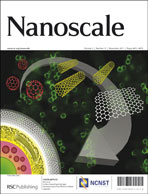The widespread forgery in all kinds of paper documents and certificates has become a real threat to society. Traditional fluorescent anti-counterfeiting materials generally exhibit unicolor display and suffer greatly from substitution, thus leading to a poor anti-counterfeiting effect. In this work, unseen but significant enhanced blue down-conversion emission from oleic acid-stabilized lanthanide-doped fluoride nanocrystals is first present and the mechanism is proposed and validated. This not only endows these nanocrystals with dual-mode fluorescence, but also offers a simplified synthesis approach for dual-mode fluorescent nanocrystals involving no further complicated assembly or coating procedures, unlike the traditional methods. Furthermore, by changing the host/dopant combination or the content of dopant, these nanocrystals can exhibit simultaneously multicolor up-conversion emission under excitation at near-infrared light and unalterable blue down-conversion emission under ultraviolet light. A preliminary investigation of their anti-counterfeiting performance has been made, and the results indicate that this color tuning capability and high concealment makes these nanocrystals behave in a similar way to chameleons and can provide a strengthened and more reliable anti-counterfeiting effect.

You have access to this article
 Please wait while we load your content...
Something went wrong. Try again?
Please wait while we load your content...
Something went wrong. Try again?


 Please wait while we load your content...
Please wait while we load your content...